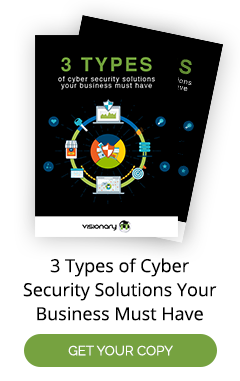
Phishing Techniques: How Hackers Phish Your Information
In order to prevent hackers from getting your information, you need to know how they do it. Read on to learn about the different phishing techniques.
Keyword(s): phishing techniques
More than 1.1 million people report they have been scammed each year.
Whether they are victims of phone scams, hacks, or other attacks, the effects are the same. Credit card information, passwords, and other sensitive information are compromised. This can leave victims not only losing money but also their confidence and sense of security.
Unfortunately, scammers become more advanced and sneaky with each passing year. This makes it easier than ever to fall victim to their tactics.
Protecting yourself requires staying up-to-date on the latest hacking schemes. Keep reading to learn a few of the most common phishing techniques you need to be on the lookout for.
Requests to Update Your Billing Information
One of the most common phishing examples, as well as one of the easiest to fall for, is a request to update your billing information. Hackers often choose a subscription service consumers pay for monthly, like Netflix, Hulu, or even a gym membership.
They send out an email that looks as though it is an official email from the subscription service or business. The email says the customer needs to update their billing information or else their subscription will end.
Not wanting to lose their subscription, unsuspecting consumers click the link and land on a page that looks a lot like the actual website of that subscription service or business.
Once there, they re-enter their billing information, credit card number, address, and more, handing the hackers their sensitive information.
Smishing
With phone numbers now readily available on the web, a hacking scheme called smishing is becoming more common. Smishing involves sending SMS messages or calling numbers in an effort to trick smartphone owners into giving up sensitive data. You might be asked to follow a link in a text message to enter a contest, update your subscription information, or do any number of other tasks.
In phone call versions of this attack, scammers may try to make you believe they are calling from a reputable business. They'll ask you to share or update your information for a variety of reasons. They may even already know some of your information and attempt to use this to verify who they are.
Apple ID Password Pop-Ups
This phishing scheme is unique to Apple devices.
When using applications on Apple devices, you might be used to having to enter your Apple ID password to rent movies, download music, make in-app purchases, and more. Often times, these pop-ups asking for your password don't even ask for your email address.
Scammers can easily create fake pop-ups that are almost identical to the real Apple pop-ups requesting your password. To the untrained eye, there is no way to tell the difference between an official pop-up and a fake one.
Once hackers have your password, they can access your Apple account, which likely has credit cards and other sensitive information ready for the taking.
Bad Apps
Fake pop-ups in applications requesting your Apple ID aren't the only threats present in apps. Entire fake apps are popping up in alarming numbers on the Google Play Store and Apple Store.
These malicious apps look and function exactly like authentic ones. But they are either out to steal money from true app creators or are designed to steal your email address, password, credit card number, and other sensitive information.
Unfortunately, it can be very difficult to spot a fake app.
A few methods you can use are checking the listed manufacturer of the app and seeing how many downloads and reviews the app has. If the manufacturer sounds authentic and the app has been downloaded or reviewed hundreds or thousands of times, it's likely authentic.
Fake Attachments
This phishing attack method requires one device to have already been compromised.
The attackers pull an email attachment from the compromised device. Then, they use the screenshot of the attachment as it appears when it is emailed. They pair that screenshot with a new attachment.
The new attachment is added to an email which has a headline sounding as though it belongs with the attachment. For instance, if the stolen attachment was an office calendar, the attackers would compose an email related to the calendar attachment.
When the email is sent out, recipients open the attachment and are redirected to an email sign-in page. They think they are re-logging into their email. But in reality, they are handing the attackers their password.
The attackers now have your email address, password, and full access to your account. They can then log-in to the new email and start the scam all over again.
These emails may also contain ransomware. Once an attachment is opened, the ransomware is released into the computer where it can access and steal sensitive information. This is the way many major commercial hacks begin.
Offering Help for Website Owners
Simple website creation services make it easy for anyone to launch their own blog or online store. But because many new website creators don't know much about advanced cybersecurity and these website creation services provide only limited security, these sites could put users at risk.
It's often easy to find the email address of a website owner.
With that, scammers send an email to the website owner letting them know there is an issue with their site. They instruct the owner to log-in to their site to fix the problem. They may even ask the owner to confirm additional sensitive information.
If the website is linked to a small business, this phishing scheme could put sensitive client information at risk.
Protecting Yourself from Phishing Techniques
While these phishing techniques are a threat to individuals, they can be even more dangerous for businesses, and especially those in industries that deal with sensitive information.
If your business is in the healthcare industry, you have a responsibility to protect your patients' information.
If you're ready to start protecting your business and its records from these and other hacking tactics, we can help. Check out our network security and cybersecurity services to find a solution that works for you today.


